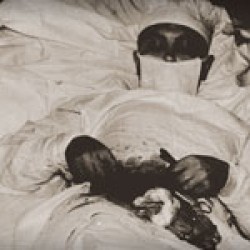Over the last few months (since October 2014), French archaeologists have been excavating an early Iron Age tomb that contains some exceptional peace of art and funerary goods.

The artwork is considered to be of Etruscan or Greek in origin. Inside the cauldron is an Attic ceramic jug decorated with black figures, one of whom is Dionysus depicted in a typical Greek banquet scene.

Since October 2014, a team of French archaeologists have been excavating an early Iron-Age princely tomb within an exceptional monumental funerary complex on the outskirts of Lavau (Champagne region).
At the centre of a 40 m diameter mound, the deceased and his chariot lie at the heart of a large burial chamber of 14 m², one of the largest of its kind ever identified by archaeologists, dating to the beginning of the 5th century BCE (Hallstatt period).
The grave contains funerary goods worthy of the highest Hallstatt elite. The centrepiece of the deposit is a bronze cauldron, approximately 1 m in diameter. Its four circular handles are decorated with heads of the Greek river deity Acheloos who is represented here horned, bearded, with ears of a bull and a triple moustache. The edge of the cauldron is also decorated with eight lionesses heads.
Source: Past Horizons












